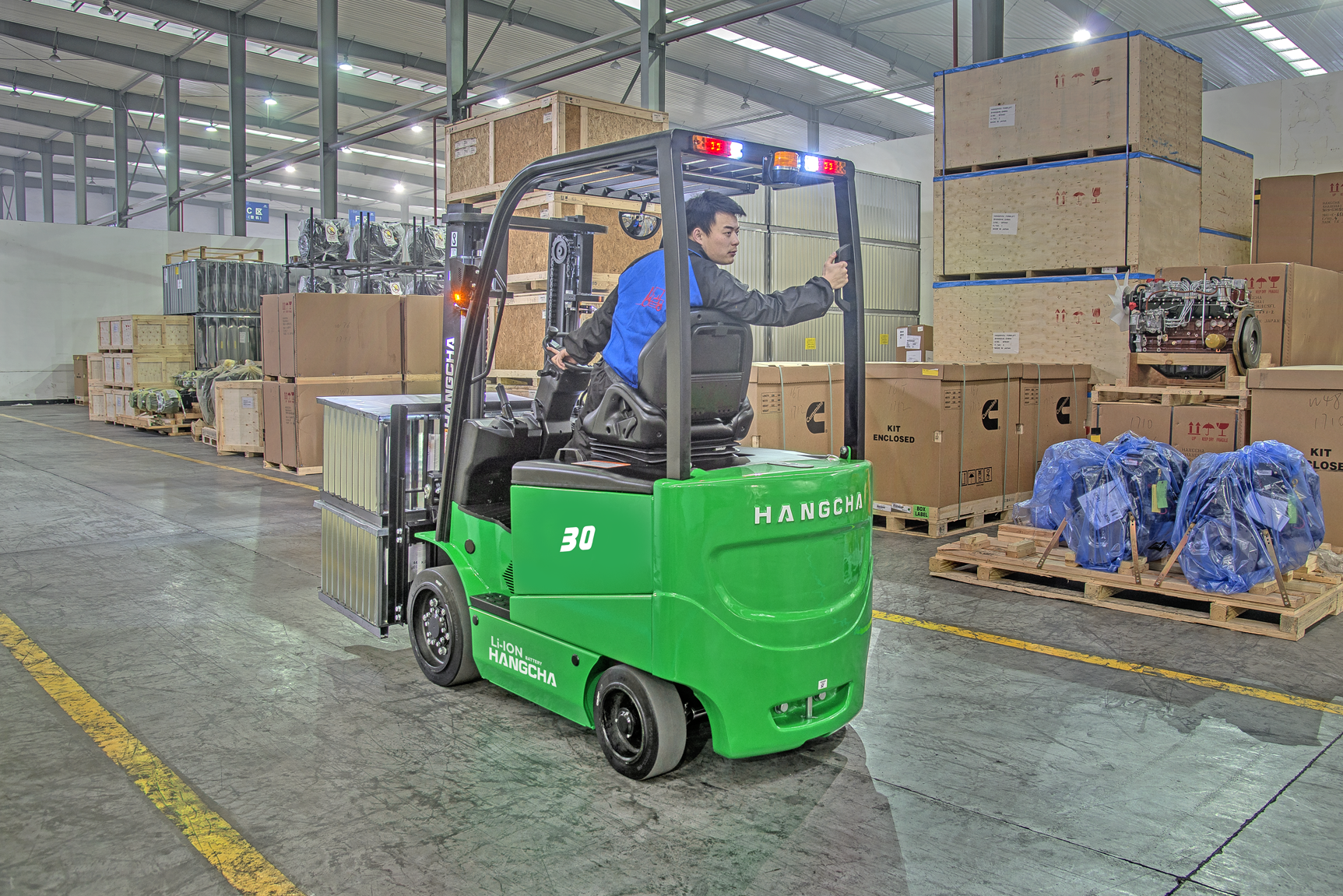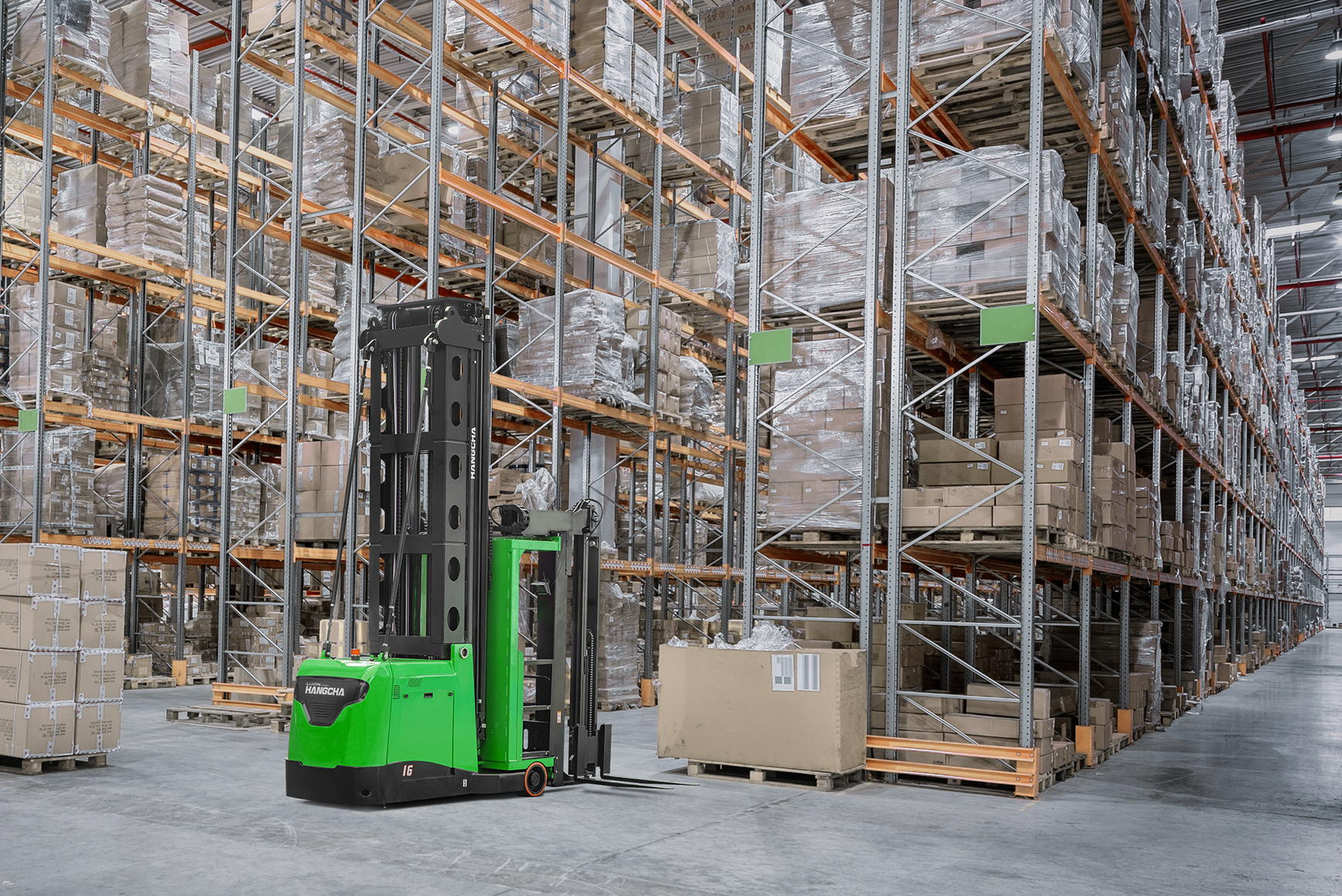1. Hours of Operation – The Forklift Mileage
When buying a used forklift in Houston, one of the first things you should check is the hours of operation. This is like a forklift’s version of mileage on a car — it tells you how much the machine has been used.
What Do “Hours” Mean in Forklift Terms?
Forklifts track their usage in hours, not miles. One hour on the meter means the engine has been running for 60 minutes. Most forklifts have hour meters on the dashboard to show total engine run-time.
How Many Hours Are Too Many?
As a general rule:
- Under 5,000 hours = Lightly used
- 5,000 to 10,000 hours = Moderate use
- Over 10,000 hours = Heavy usage (expect more wear and tear)
However, the condition also depends on how well the forklift was maintained. A 10,000-hour forklift with great service history may be a better buy than a 4,000-hour one with no records.
Low Hours Don’t Always Mean Low Wear
Be careful — a low-hour forklift isn’t always a better forklift.
- It may have been used in harsh conditions (e.g., outdoors, heavy loads)
- It could have long gaps between maintenance
- Idle machines can still have rust or fluid issues
That’s why it’s important to look beyond the meter.
Pro Tip: Ask for Service Logs
Always ask the seller for a maintenance log. This should include:
- Regular service records
- Parts replaced
- Repairs made
- Oil/filter changes
- Safety inspections
A forklift with clear service documentation shows it was taken care of — and reduces your risk after purchase.
2. Maintenance & Service History
When buying a used forklift in Houston, the maintenance history is one of the most important factors to review. A forklift that has been serviced regularly is far more reliable and cost-effective than one with a poor service record.
Why Maintenance Records Matter
Forklifts are exposed to demanding conditions. Over time, they require routine maintenance, including:
- Oil and filter changes
- Brake and hydraulic inspections
- Battery or fuel system service
- Tire and mast lubrication
- Cooling system checks
Without proper upkeep, even forklifts with low operating hours can develop serious mechanical issues. Maintenance history gives you insight into how well the machine was cared for.
Red Flags to Look For
Always ask for detailed service documentation. Watch for these warning signs:
- No maintenance records available
- Long gaps between service intervals
- Evidence of unlicensed or inconsistent repairs
- No proof of inspection by qualified technicians
A missing or unclear service record could mean the forklift wasn't serviced on time, which increases the risk of breakdowns.
Was It Part of a Preventive Maintenance Plan?
If the forklift came from a company with a fleet management program, it may have been on a preventive maintenance schedule. This is a positive sign. It means the machine was routinely serviced at set intervals, often before problems developed. Preventive maintenance helps extend equipment life and reduce repair costs.
Bring a Forklift Inspection Checklist
Before committing to a purchase, use a forklift inspection checklist. This helps you verify the mechanical condition, identify wear, and confirm any claims made by the seller. If a dealer can’t support their price with clean service history and good condition, it’s best to walk away.
3. Condition of Tires, Mast & Forks
The physical condition of a forklift says a lot about how it was used and maintained. When inspecting a used forklift in Houston, pay close attention to the tires, mast, and forks. These parts face constant stress and wear during daily operation.
Inspect the Tires Closely
Start with the tires. Look for
- Cracks or cuts in the rubber
- Uneven wear patterns
- Flat spots
- Chunking or missing rubber
Damaged tires can reduce stability, increase the risk of accidents, and lead to additional repair costs. Pneumatic tires should have deep tread, while cushion tires should be smooth but not worn down.
Check the Mast for Structural Integrity
The mast is responsible for lifting and lowering loads. Watch for:
- Bent or warped lift rails
- Leaking hydraulic cylinders
- Rust around moving parts
- Jerky or slow movement during lifting
Operate the forklift if possible. The mast should move smoothly, without delay or vibration.
Inspect the Forks for Wear or Damage
Forks carry the weight of every load. Carefully inspect for:
- Cracks or visible bends
- Uneven fork heights
- Worn-out tips or heels
- Missing locking pins
Worn or bent forks can fail under load and create serious safety hazards. OSHA requires forks to be removed from service if wear exceeds 10% of the original thickness.
Don’t Skip the Functional Test
If you're allowed, test the forklift with and without a load. Listen for abnormal sounds, watch for drifting forks, and observe the alignment of the mast while lifting.
A forklift may look good on paper, but if it can't lift or steer properly, it's not a smart investment.
4. Battery or Engine Health – Powertrain Matters
The powertrain is the heart of any forklift. Whether you’re buying an electric or LP/diesel forklift, checking the condition of the battery or engine is essential. A strong power source means better performance, fewer repairs, and longer machine life.
For Electric Forklifts: Test the Battery
Electric forklifts rely entirely on battery power. A weak or aging battery can lead to poor run-time and high replacement costs. During your inspection:
- Ask how old the battery is (most last 5–7 years)
- Check for corrosion on terminals or connectors
- Look for low fluid levels or swelling in battery cells
- Confirm the battery holds a charge and powers the forklift under load
A new battery can cost several thousand dollars, so make sure you factor its condition into your buying decision.
For LP or Diesel Forklifts: Inspect the Engine
Internal combustion forklifts need a healthy engine to run smoothly and efficiently. Check the following:
- Start-up: Does the engine start easily without smoke or hesitation?
- Leaks: Look under the machine for oil, fuel, or coolant leaks
- Fluids: Inspect oil color and level, coolant condition, and hydraulic fluid
- Sounds: Listen for knocking, misfiring, or irregular engine noises during operation
A forklift that struggles to start or makes unusual noises may need engine work, which can be expensive and time-consuming.
Evaluate Transmission and Hydraulics
Regardless of power type, also check the transmission and hydraulic systems. A test drive should reveal:
- Smooth acceleration and shifting
- Strong and responsive lifting action
- No lag when steering or braking
If the forklift hesitates, stalls, or feels weak, there could be deeper mechanical problems.
A healthy powertrain is critical for safety, reliability, and value. If anything seems off, it’s best to have a professional mechanic inspect it before making a purchase.
5. Dealer Reputation & Warranty Options
Buying a used forklift isn’t just about the machine — it’s also about who you’re buying it from. A reputable dealer can make the difference between a smart investment and a costly mistake. Before closing the deal, take time to research the seller’s background and understand what support they offer after the sale.
Why Dealer Reputation Matters
A trusted forklift dealer in Houston will:
- Be transparent about the forklift’s history and condition
- Offer in-person inspections and test drives
- Provide clear pricing without hidden fees
- Stand behind their equipment with service options and support
Check online reviews, ask for references, and look for dealers who have been in business for several years. A dealer with a strong local presence is more likely to honor warranties and provide reliable after-sales service.
What to Ask Before You Buy
To protect your purchase, ask the dealer:
- Does the forklift come with a warranty?
- What does the warranty cover — parts, labor, or both?
- Is there a return policy or satisfaction guarantee?
- Can I receive service or parts support from this location?
A forklift without a warranty may seem cheaper up front, but repairs can add up quickly. Even a short-term limited warranty gives peace of mind and shows the dealer stands behind their equipment.
Look for Added Value, Not Just the Lowest Price
Reputable dealers often offer:
- Service agreements or maintenance plans
- Free delivery within the local area
- Certified pre-owned equipment inspections
- Financing options for qualified buyers
When comparing dealers, look beyond the price tag. The added support, service reliability, and long-term relationship can save you time, money, and stress.
Final Thoughts – Be Smart When Buying a Used Forklift
Buying a used forklift in Houston can be a smart, cost-effective decision — but only if you take the time to inspect it properly. A good deal is about more than just price. You need to understand the forklift’s condition, maintenance history, and the reputation of the dealer selling it.
Let’s recap the five key things you should check:
- Hours of Operation – Know how much the forklift has been used
- Maintenance History – Ask for service records and check for preventive care
- Tires, Mast, and Forks – Inspect for damage or signs of wear
- Battery or Engine Health – Confirm the power system is strong and reliable
- Dealer Reputation and Warranty – Choose a seller you can trust
Every used forklift tells a story. The more you know about it, the better your buying decision will be. Use a forklift inspection checklist, ask the right questions, and don’t hesitate to walk away from a deal that doesn’t feel right.
If you're looking for reliable used forklifts in Houston, we can help. Our team at TX Equipment Source offers fully inspected machines, warranty options, and honest advice.





